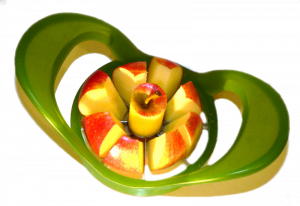
Apple just introduced their new MacBook and MacBook Pro, so far amping up the chic-meter that only Jony “Dramatic Stutter and Pause” Ive could do the product justice in their promo video. Yet, despite the company’s environmentally-friendly pronouncements, I’m unconvinced. They continue to pull a time-honored sleight-of-hand, touting their products as recyclable while ignoring the massive waste of energy and materials that goes into their production.
Let’s cut right to the heart of the matter: Apple talks about environmentalism and has made some real strides (as noted by TUAW and CNET) in reducing packaging, eliminating toxic chemicals, and improving the energy efficiency of their products. This much is true. I don’t doubt that they would like to be an environmentally-friendly company, and one might assume that the manufacturing process meets this description. But although producing computer products will always be extremely environmentally-unfriendly, Apple’s new “brick” unibody process is probably much less green than previous processes (as noted by TreeHugger).
Think about it:
- Apple takes a 2.5 lb aluminum slab and cuts out 80% of the metal! These tailings are very difficult to recycle, and Apple proudly says they’re leaving 2 lbs on the floor for every machine they make.
- The amount of time and energy required to create that unibody must be incredible! Just watch the video. Milling machines? High-powered industrial lasers? Wow!
Compare this to a conventional process, which stamps out individual pieces from sheet metal. Very little is wasted, the scrap remains uncontaminated and can more easily be recycled, and the entire process takes a little energy and less than a second.
The fact that Apple doesn’t go into detail about the environmental impact of this new manufacturing process probably says a lot. They change the subject – talking about how recyclable the aluminum chassis is and how it saves on transportation. This is a classic trick – focus on the positives and hope no one notices that you’re ignoring the negatives. In fact, even though Apple never says the manufacturing process is environmentally friendly, a reasonable person might make this assumption, as did TidBITS.
It’s hard to figure out just how energy-intensive this process is from Apple’s data, however. They just introduced a new environmental status report format with these new machines. Although it’s light on details, it does include some amazing metrics if you look hard enough. The company only lists production on their “greenhouse gas emissions” chart, but this can help us deduce the energy required to produce the products, at least, since this is likely directly proportional.
| Production | Consumer Use | Transport | Recycling | |
| MacBook Pro | 285.6 | 212.8 | 56.0 | 5.6 |
| MacBook | 230.0 | 179.4 | 46.0 | 4.6 |
| MacBook Air | 149.6 | 156.4 | 30.6 | 3.4 |
This table, filled with information from Apple’s status reports, shows that production of the new MacBook and MacBook Pro creates far more greenhouse gases (and thus, take much more energy) than the MacBook Air. In fact, production takes even more energy than consumer use of the machines over a four year period! Wow!
Don’t get me wrong. I love my MacBook Pro, and I would love one of the new ones. And Apple is probably more environmentally-friendly than most companies. But this new manufacturing process is not a highlight of efficiency.
(And, seriously, could Jony Ive sound any more like Jeremy Clarkson?!?)
Leave a Reply